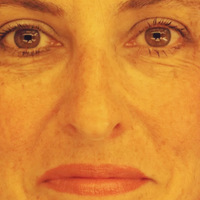Research Interests:
Research Interests:
Research Interests:
Research Interests:
Research Interests:
Research Interests:
Research Interests:
Research Interests:
Research Interests:
Research Interests:
Research Interests:
Research Interests:
Research Interests:
Research Interests:
Research Interests:
Research Interests:
Research Interests:
Research Interests:
Research Interests:
Research Interests:
Research Interests: Military History, Spanish, Agriculture, Refugees, Jewish, and 6 moreFree Zone, Concentration Camps, Merlin, Dachau, M, and Exclusions
Research Interests:
Research Interests:
Research Interests:
Research Interests:
Research Interests:
Research Interests:
Research Interests:
Research Interests:
Research Interests: Military History, German, Refugees, Jewish, Free Zone, and 3 moreConcentration Camps, M, and Exclusions
ment, self-display, gender, Jewish identity, and even the nineteenth-century project to reclaim a Jewish past, an example of which was the Berliners’ adoption of “Bar Kochba” as their club’s namesake. Although National Jewish Turnen... more
ment, self-display, gender, Jewish identity, and even the nineteenth-century project to reclaim a Jewish past, an example of which was the Berliners’ adoption of “Bar Kochba” as their club’s namesake. Although National Jewish Turnen played only a limited role outside German-speaking central Europe, it actively promoted Turnen as a means of improving the situation of Ostjuden. At the same time, though, leaders acknowledged Turnen’s limited usefulness for selfdefense against pogroms and conceded that financial barriers prohibited all but a small percentage of Ostjuden from training in the first place. Wildmann carries his narrative up to 1921, when Berlin Turners decided to reconstitute the umbrella organization for postwar circumstance. This decision might make sense from an institutional viewpoint, but the book deals primarily with the period beforeWorldWar I, and these are its strongest parts. Largely inactive during the war, the Turners spent the three postwar years that Wildmann covers mostly in trying to regroup. With the exception of the 1919 “Munich Thesis,” in which a number of clubs advocated placing more emphasis on political education and less on physical development, thereby reversing the priorities of the 1898 Turners, Wildmann has little new to report and could well have taken 1914 as his endpoint. Nevertheless, Daniel Wildmann has incorporated a wealth of rich material into a book that will prove particularly rewarding for scholars of Jewish history, masculinity, and the body.
